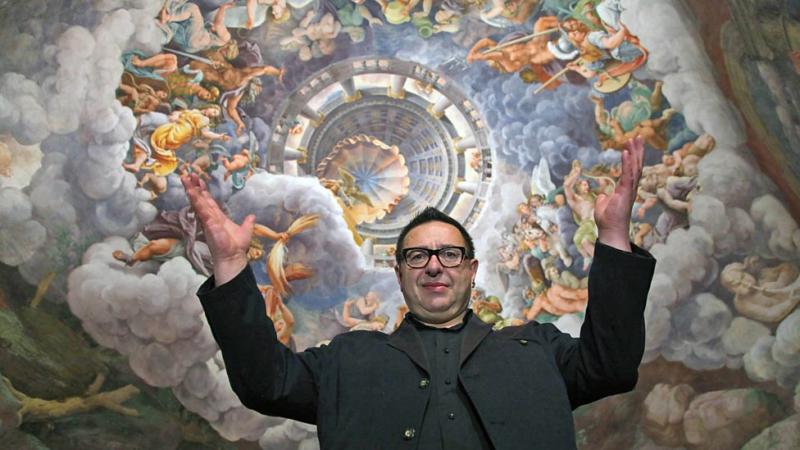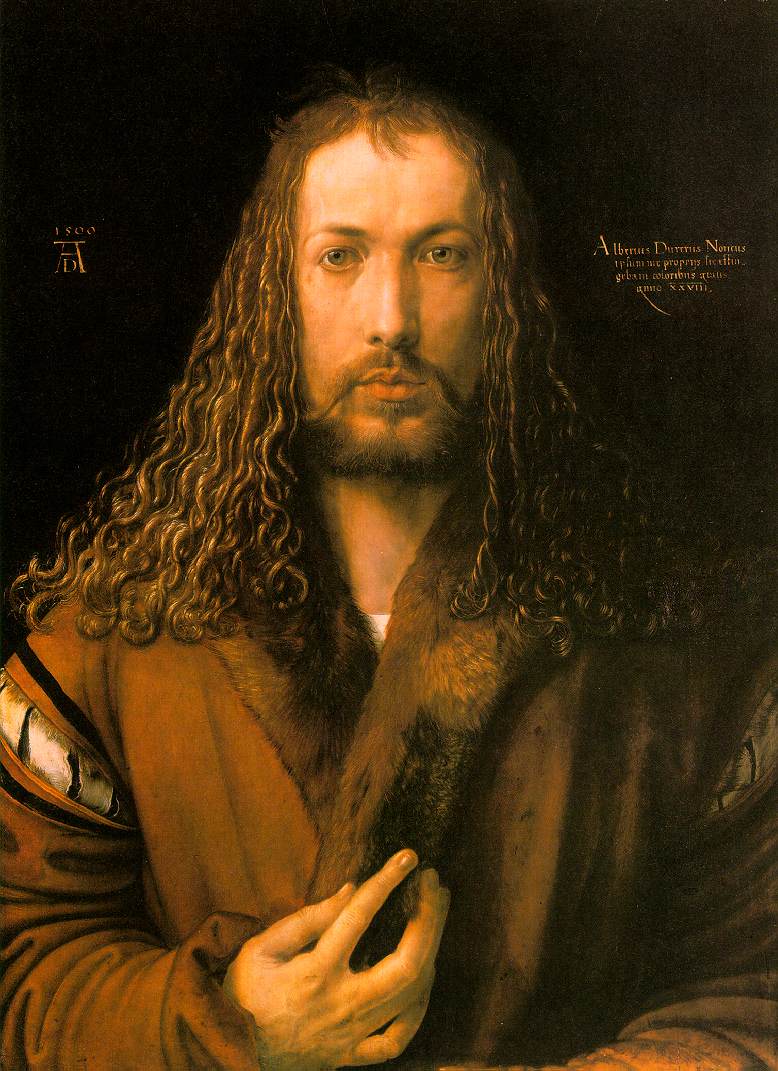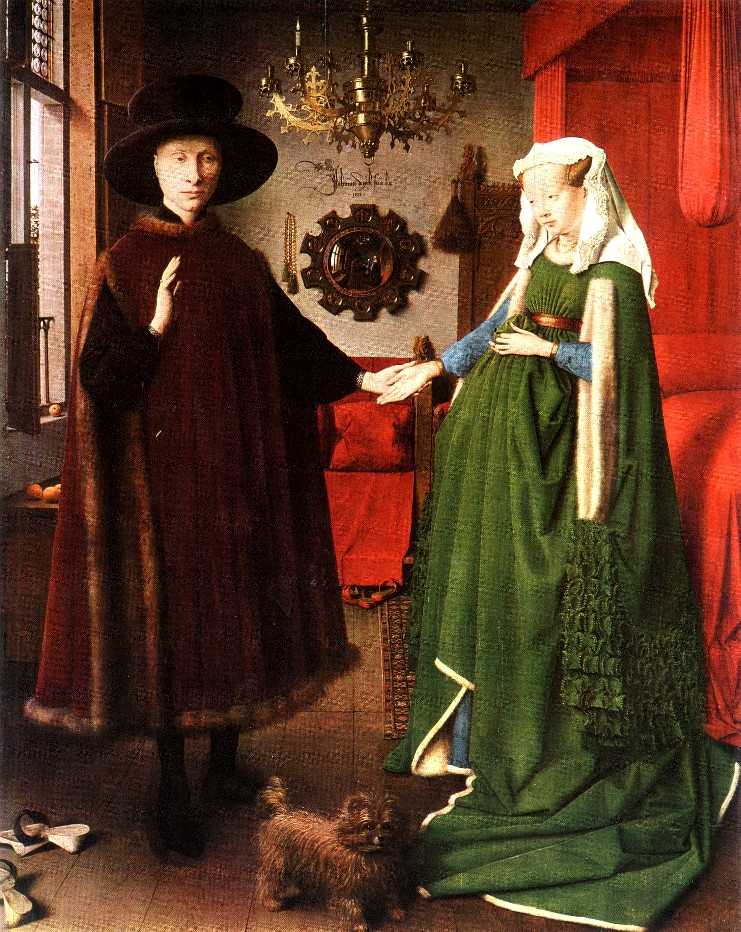The Renaissance Unchained, BBC Four | reviews, news & interviews
The Renaissance Unchained, BBC Four
The Renaissance Unchained, BBC Four
Could this momentous cultural movement have happened without our friends in the North?

Waldemar Januszczak always has a provoking agenda to shape his now nearly countless forays into television art history. In this four-part series he's out to challenge what he sees as the unthinking acceptance of the one-dimensional traditional and monopolistic version of the Renaissance.
He assumed we all blindly agreed with that second-rate painter but potent myth-maker Vasari (born in Arezzo, lived in Florence), who, in his 1550 biographical three-volume Lives of the Artists, set out the case for the innovative supremacy of contemporary Italian art – the Renaissance. Vasari indeed was the first to use "Renaissance" in this context. He suggested in a series of over-the-top essays that the painters, sculptors and architects of Italy, and specifically Florence, made a crucial break with medieval templates to forge a new humanistic art.
 Vasari’s Lives is conventionally thought of as the first book of art history, not to mention the most influential art book ever written. He paid hardly any attention to the contemporary art of the North except to that arrogant genius of Nuremberg, inventor of the self-portrait, Albrecht Dürer – although Januszczak didn’t mention that Dürer visited Italy. The new art was based on the rediscovery of the arts of antiquity, that perfection reached by the Greeks and Romans (Dürer self-portrait, right).
Vasari’s Lives is conventionally thought of as the first book of art history, not to mention the most influential art book ever written. He paid hardly any attention to the contemporary art of the North except to that arrogant genius of Nuremberg, inventor of the self-portrait, Albrecht Dürer – although Januszczak didn’t mention that Dürer visited Italy. The new art was based on the rediscovery of the arts of antiquity, that perfection reached by the Greeks and Romans (Dürer self-portrait, right).
Most prominent was Vasari’s hero, Michelangelo, as image-making in the west was revolutionised. Vasari referred to the art of the north as gothic, indeed even barbaric. According to Januszczak, this view has prevailed over five centuries of subsequent art and art history. The jingoistic Florentine Vasari presented a rousing tale of cultural triumph in what our impassioned narrator called the great football match of civilisation: Florence 1, Rest of the World 0.
Oh no, insisted Januszczak, who left sunlit Italy to stomp about from Brussels to Bruges, and Stockholm to Nuremberg: Januszcak, both writer and presenter, obviously saw himself as an original myth buster. It all happened really elsewhere, not under blue Italian skies but up north. The Northern Renaissance invented oil paint, when those pesky Italians just did frescoes; and they also invented the depiction of genuine human emotion, expressed with the utmost skill in idioms of potent realism. Not for Rogier van der Weyden the enigma of the Mona Lisa, but real translucent tears for the Virgin at the death of her Son.
 In the opening sequences our guide was lugging a battered suitcase which was finally unpacked in Bruges, where Januszczak unfurled quantities of material, like that which clothed the couple in Van Eyck’s Arnolfini Portrait (pictured left). Startling facts emerged: Giovanni Arnolfini was a wool merchant from Lucca who spent most of his life in Bruges, the wealthy trading city of Flanders. His costume was adorned with the exceptionally expensive pelts of pine martens, perhaps 200 of them; but we were told that the bulk of his companion Giovanna’s green dress, so often thought to show that she was pregnant (the couple actually never had children), was because its lining was made from the white chest fur of red squirrels, minever, 2000 of them. It was unimaginable luxury.
In the opening sequences our guide was lugging a battered suitcase which was finally unpacked in Bruges, where Januszczak unfurled quantities of material, like that which clothed the couple in Van Eyck’s Arnolfini Portrait (pictured left). Startling facts emerged: Giovanni Arnolfini was a wool merchant from Lucca who spent most of his life in Bruges, the wealthy trading city of Flanders. His costume was adorned with the exceptionally expensive pelts of pine martens, perhaps 200 of them; but we were told that the bulk of his companion Giovanna’s green dress, so often thought to show that she was pregnant (the couple actually never had children), was because its lining was made from the white chest fur of red squirrels, minever, 2000 of them. It was unimaginable luxury.
Meanwhile the lifesize carving of the Bamberg horseman of 1220 was contrasted, favourably, with Donatello’s equestrian statue in Padua, The Monument of Gattemelata, from 1450, more than two centuries later: the North wins again. Januszczak attributed the superb achievements of the German and Flemish territories to the invention of oil paint (although according to him it was actually invented in 700 AD or so in Afghanistan, for Buddhist paintings), optics, lenses and spectacles, the better to aid the artist’s vision. Hyperbole held no terrors for Januszczak: Flemish artists produced an “art that can paint miracles”.
It was an enormous pleasure to see a number of great paintings, but why presenters have to present in front of them is an insoluble mystery of most art programmes - Waldemar! Out of the way! And as usual we had unnecessary uplifting music to whip up excitement. The lack of helpful subtitles to give us names and locations so that we might possibly some day see for ourselves was another irritant. A quick mumble from the narrator will not suffice.
rating
Explore topics
Share this article
Add comment
The future of Arts Journalism
You can stop theartsdesk.com closing!
We urgently need financing to survive. Our fundraising drive has thus far raised £49,000 but we need to reach £100,000 or we will be forced to close. Please contribute here: https://gofund.me/c3f6033d
And if you can forward this information to anyone who might assist, we’d be grateful.

Subscribe to theartsdesk.com
Thank you for continuing to read our work on theartsdesk.com. For unlimited access to every article in its entirety, including our archive of more than 15,000 pieces, we're asking for £5 per month or £40 per year. We feel it's a very good deal, and hope you do too.
To take a subscription now simply click here.
And if you're looking for that extra gift for a friend or family member, why not treat them to a theartsdesk.com gift subscription?

Comments
The most irritating thing was
The most irritating thing was that we the camera did get onto a picture, the editor gave it such a short moment that we could not absorb and SEE the picture. The next most irritating thing was the dreadful gimmickry of the suitcase and the unrelevant 'facts' which had nothing to do with art, Actually, no, THE most irritating thing was the arrogance of the presenter 'everyone knows the melancholia by Durer ' and to make sure that's true, we see the drawing for two seconds. the programme was inconsistent and intensley annoying. Please get Andrew Graham Dixon back.... PS the Botticelli was equally irritating and the shots of the actual venus looked as if they wer shot through horticutural fleece - yes I know there's glass in front of it but surely a good camerman can light that out.....
When I'm watching one of
Anyone who believes
Anyone who believes Januszczak is 'an original myth buster' in this respect should take a look at the Open University 'Renaissance Art Reconsidered' first offered in 2007, and the really excellent associated Yale University Press books, which cover this theme in enormous and fascinating detail. I studied this course a year ago and would recommend it to anyone interested in discovering northern European art. Having studied so many of the paintings we only got a few seconds to see on screen, I agree it is frustrating, but today we have the wonders of Google Images to see any painting in huge detail whenever we want. As for that suitcase, I kept thinking it would fall backwards at any moment off its precarious position on top of that wall as Januszczak emptied it!
I agree with many of the
I agree with many of the comments above. Fine paintings, wonderful locations (especially in the second programme) but hardly earth-shattering revelations. Vasari's comments have been taken with a pinch of salt for a very long time. I thought the second programme lost it's message in the telling, and there were errors: the view now is that Giotto didn't paint those frescoes in San Francesco Upper church. At the start of the programme, WJ told us that the best way to navigate around Italy was to start with a church, as the 'holy end' is always at the east. Behind him as he spoke was the Basilica of San Francesco, which is orientated the opposite way!
One of the best I've ever
One of the best I've ever watched. Quite informative and as much humaine the way the programmer applies while rendering historical aspects of artistic creativity. I did felt nervous about the big case on the wall episode, but all of it was about the programmer's being hasty doing his thing intimate and timely I suppose. A very good documentary, in the " good old BBC" way.